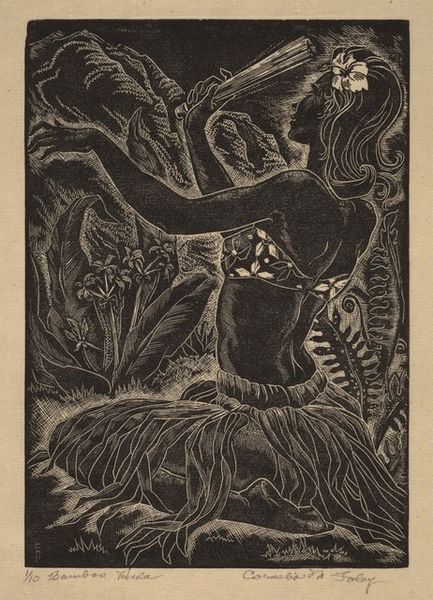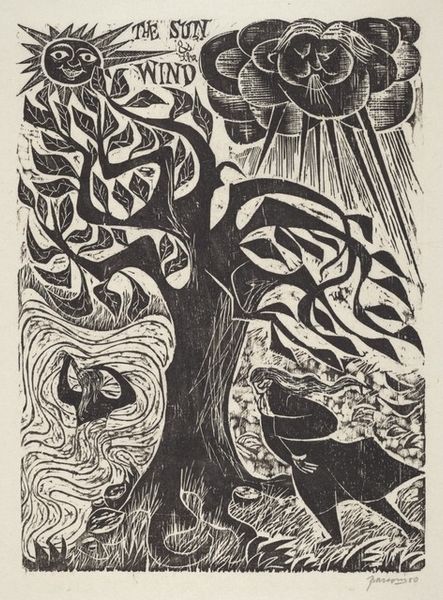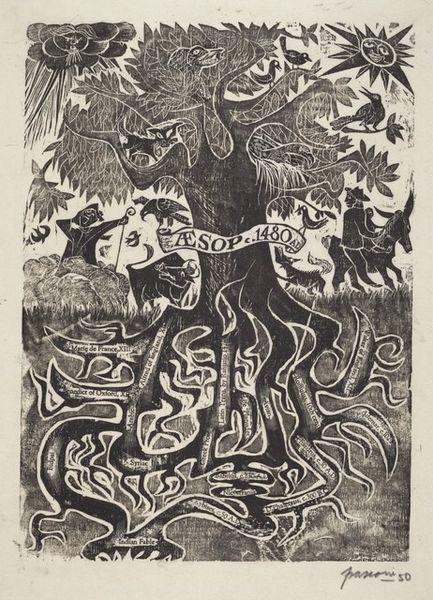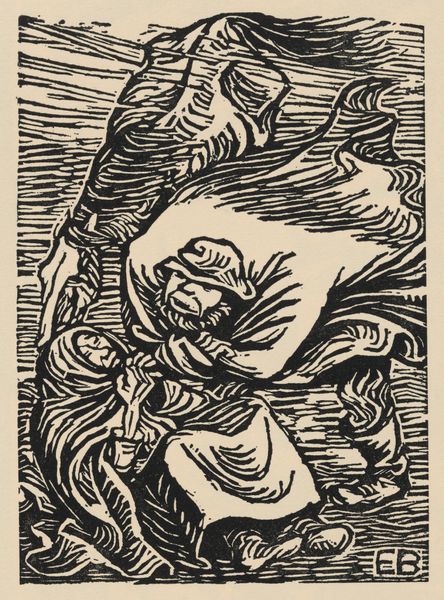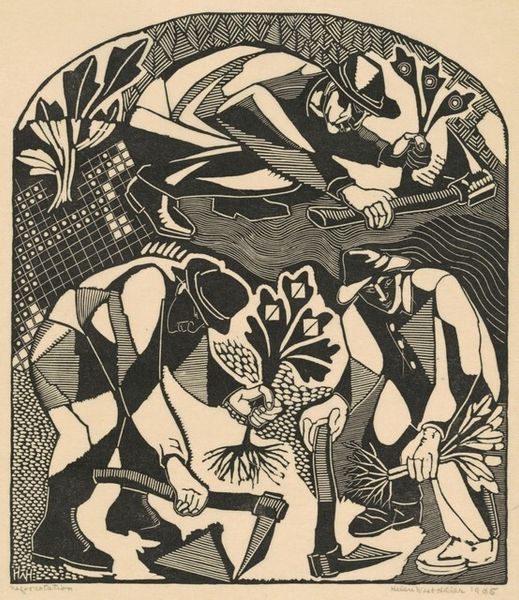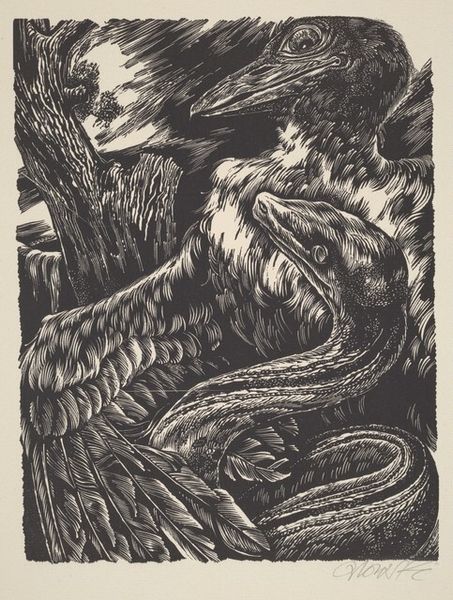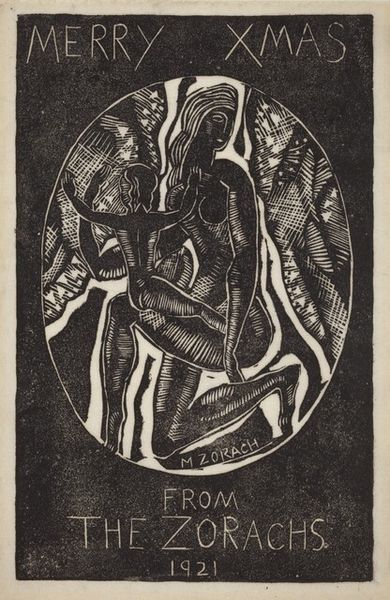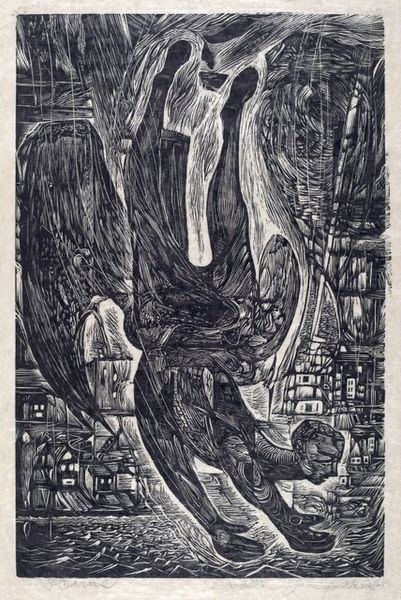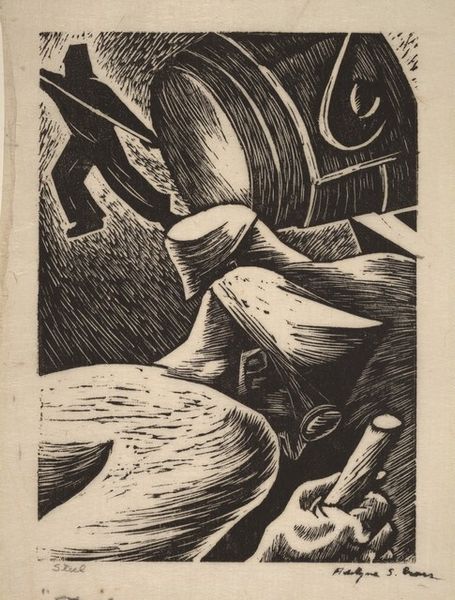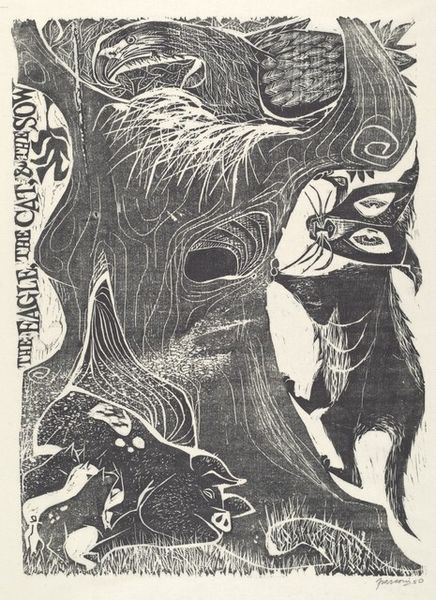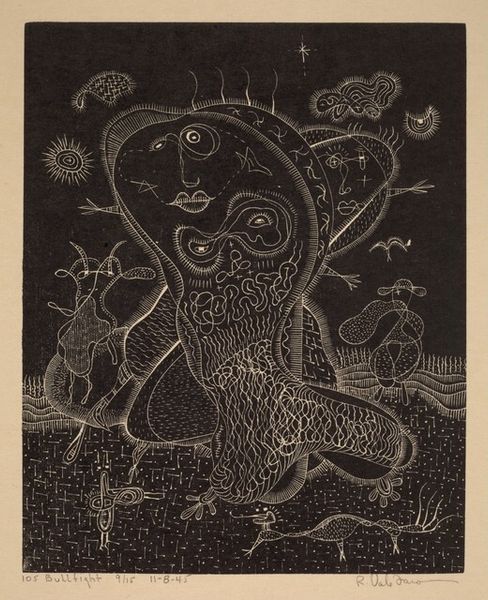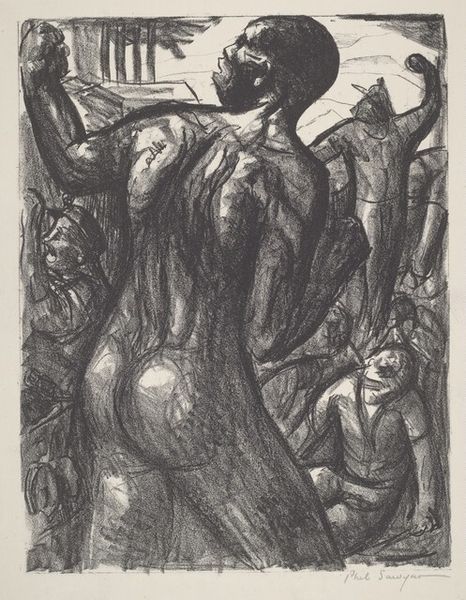
print, woodcut
# print
#
landscape
#
figuration
#
woodcut
#
line
Copyright: National Gallery of Art: CC0 1.0
Curator: What strikes me first about this work is the stark contrast between the dense black ink and the bare paper. The sharp, angular lines create such a dynamic composition. Editor: Indeed. This woodcut, titled "The Mock-Bird," was created by Antonio Frasconi in 1950. What’s fascinating here is that Frasconi, an immigrant from Uruguay, frequently depicted birds as symbols of freedom and migration, often echoing themes of displacement and longing. Curator: The lines definitely contribute to the bird's strong silhouette. It really commands attention; there’s this intense gaze and open beak, and it reminds me of Expressionist prints with their powerful woodcut techniques. It makes one feel the presence, maybe even the call, of this bird. Editor: I see what you mean. This imagery also evokes the social anxieties of the mid-20th century, in that birds like mock-birds were very conspicuous, mimics of other songs and behaviors. If we follow Frasconi's biography, we may interpret that mimicry as both an assimilation and a subtle critique of American culture, reflecting his own experiences as an outsider navigating a new landscape. The two other birds could even symbolize how that feels, where everything seems mirrored. Curator: Interesting perspective. I hadn’t thought about the socio-political dimensions of bird mimicry. The heavy blacks versus sparse whites do bring a kind of graphic anxiety to the piece, the textures amplifying this unease by giving everything—from feathers to foliage—a rough quality. There is visual interest and the whole piece certainly isn’t balanced or proportional in a typical, classical way. Editor: Precisely. This lack of balance, along with the angular cuts and simple forms, mirrors a period marked by uncertainty and searching for identity in a postwar world. Frasconi, through "The Mock-Bird," offers us a poignant reflection on voice, adaptation, and cultural commentary. Curator: Seeing it as a visual representation of assimilation and cultural identity really enriches my understanding of the artist's stylistic choices. I came at it from composition, color, form but you bring it into the historical context of his social environment, making the message so much clearer. Editor: Yes, this artwork exemplifies how an image can reflect historical moments and lived experiences while it asks essential questions about cultural identity. It gives us an insight into the artist, and, on the other hand, society at large.
Comments
No comments
Be the first to comment and join the conversation on the ultimate creative platform.

